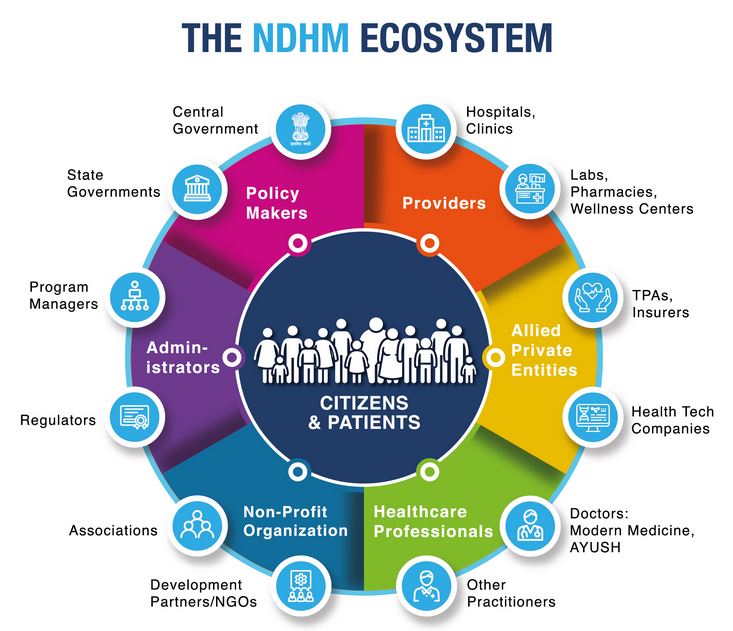Background
Last year the Government of India announced the National Digital Health Mission (NDHM). We were asked to review and comment on the draft as one of the stakeholders in healthcare. This inclusive approach to involve the various stake holders was never seen before. We believe that COVID-19 and NDHM has increased the pace of digital healthcare and can unlock USD 200 to 250 billion in next 10 years in terms of primary and secondary impact to the nation’s economic value. Such is the magnitude of the NDHM initiative for India. So will this succeed?
To understand the critical success factors for India, let’s understand some notable failures and learn from them. Also we need to learn from the currently ongoing Covid Vaccination Drive in the country that’s the largest in the world and the fastest that will cover over a billion people.
Notable Failures
We have several tech giants and countries that have invested and failed in rolling out digital health initiatives. Some of these that come to my mind are:
Google Health
I had written in my column on Why did Google Health Fail? (see text below)

IBM Watson Health
Some of the insider views on the closure of IBM Watson Health (shut down on 31 Dec 2020) are as under:
- Business call by IBM leadership – viability of the case in oncology
- Muted doctor’s acceptance
- 50:50 prediction accuracy of the algos
- Wrong expectations set when initially selling the idea to the doctors and Manipal
- Difference in clinical pathways of oncologists on the Watson output
- Implementation was very complex due to the different oncology tumour and stage
- Oncologists time to teach the system versus doing it by their own experience
- Doctors believed that they were recruited to treat the patient and not teach the Watson
- Limited use case of the system
- More for research than for actual treatment and second opinion
UK NHS Spine Program
As part of the leadership team of one of the vendors involved in the UK NHS Technology initiative and also interacting with the Managing Director of British Telecom Healthcare that was leading the rollout in the UK of the NHS Spine, I gathered that the digital health (in those days-2007, this was not called digital health) in UK had a partial success. The reasons were multi-fold:
- Exgaggerated benefits of the program
- Botched up decentralized implementation at the different trust level
- Multiple stakeholders with their wrested interest
- Manpower and resources shortages
- Multi-year delays and costs overruns
- Poor change management and acceptance at the ground level with the clinical workers
- And many more issues
African ICT and Digital Initiatives
As part of the Health and ICT Minister’s Panel for Africa, the major issues voiced by the Ministers from the African continent happens to be the disease of Pilotonomics. There have been multiple pilots of initiatives but none have actually fructified to be a mainstream as some of them have been abandoned by the sponsors and the donors as the budgets ran out
Have seen the failures across the Tech Giants, developed world countries and low income countries, the issues of failures are a myriad of technology, sponsorship, change management and end user acceptance.
Why will India succeed?
During the Covid-19 pandemic, India Government initiated a host of digital initiative (see blog Sustainability of Digital Health | Kapil Khandelwal (KK)). The most important being the roll out of the CoWin App for the vaccination of the citizens. For the first time on the world, a billion people would be mobilized through this initiative for their vaccination. With the pace and success of the initiative and the citizen acceptance, we will see that the National Digital Health Mission will succeed. Some of the positives that I am seeing include:
- PMO and senior Ministers’ and Bureaucrats’ driving this Mission
- Inclusive attitude to gather all the stakeholder’s voices right from the beginning
- ICT framework and the National Telemedicine Act also being enacted bringing the decades of differences between the Medical Council of India (MCI) and various players to an end
- Many doctors have actually started using Telemedicine during the lockdowns
Let’s not belittle the National Digital Health initiatives for shorter political gains!
Also read: Digital Health | Kapil Khandelwal (KK)
Republished Column: A Dose of IT: Why did Google Health fail?
Google Health is not going to be there anymore.
After its launch in May 2008, Google Health has gone through its chequered existence till the Google Execs announced, last week, to withdraw the product by end of 2011. As I epilogue, I will use the PESTC model to conduct the postmortem analysis on the death on Google Health
Politically, 2007-08 was a time when concerns around reforming healthcare reform were at its peak and a one of the key agenda items in the US Presidential war. Such rhetoric on healthcare and need to reform healthcare was politically echoed world over by many leaders. This political analyst wanted to get more bang for the buck on healthcare spend. This meant more business for healthcare ICT to create solutions to address the issues of healthcare access, costs, quality, outcomes and so on. Politically, it made sense for tech heavy weights to put their might in launching healthcare solutions and in this political back drop that Google Health was launched. However since then and Obama’s healthcare reforms bill, not much impact for many tech major’s who waged on healthcare and hence to reassess their decisions to throw their towels in.
Economically, this was the time for world’s worst economic downturn since the Great Depression. Healthcare was seen as anti-recessionary. Tech major’s boardrooms and leadership strategy break outs discussed derisking and growth by enter social sectors such as healthcare, education and so on. Google’s board and leadership could not have been thinking differently when giving thumbs up to invest in healthcare business. However as many tech major now realize that healthcare requires long-term strategic vision and investments to stay in the game. Like many other tech major, Google has other investment priorities in other portfolios of their business such as android OS and mobile phones and devices, etc. It made sense for them to exit out of a sector that requires time and investments to change the way people and clinicians manage health.
Socially, the rise of social media is changing the way people manage information, communicate, exchange content and interact including their doctors and care givers. Google Health failed to capture this trend in their solutions.
Technologically, Google failed to learn from the failures of many others who failed in the past and replicated solutions where there are far more superior solutions and players in the field. Some major gaps, I guess alignment with doctors and clinicians is the first step towards creating a technologically superior solution that can align with healthcare consumers. Secondly, there were hardly any vertical partnerships in healthcare that Google went out to create an ecosystem. Lastly, Google did not integrate their other products such as Google Maps that could provide location aware services to the consumers on their health.
Consumers and competition, contributed to putting the nails in the coffin of Google Health. Google Health focused on one end of the healthcare value chain and did not believe in working in aligning the overall healthcare ecosystem. Moreover, consumers are moving towards mobile-based solutions on their smart handphones that Google Health failed to capture as a trend. Lastly, competition has far better ideas and staying power as health tech solutions is a long-term game.
With Google Health putting down their shutters on their shop, what are the implications? Firstly, the spotlight now falls on Microsoft HealthVault. Analysts will now try to second guess Microsoft’s response to this development. Health is a very large opportunity that Google may not like to miss. It may come back with an acquisition sometime later.
Google Health, RiP!




